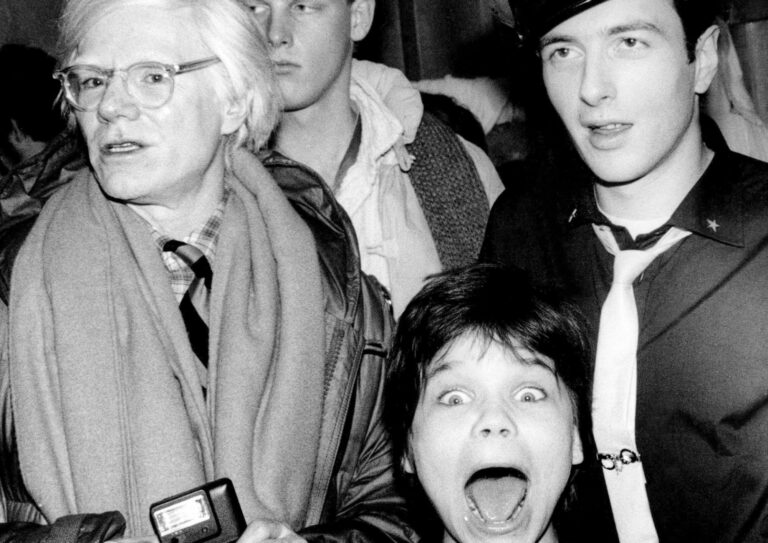Primate Vision: Ape or Man?
Roxy Cinema lends its screen to the examination of the human-primate evolutionary connection.

Scene from Human Nature
Now that apes rule multiplexes following the back-to-back-to-back releases of Godzilla x Kong: The New Empire, Monkey Man, and Kingdom of the Planet of the Apes, Roxy Cinema will lend its own screen to the examination of the human-primate evolutionary connection. Following up on the 2017 Anthology Film Archives series Simian Vérité — an in-depth investigation of chimps on cinema — Primate Vision: Ape or Man? looks at the contested territory between the end of ape and origin of man through multiple films that investigate the distinction between animal behavior and human society. Bringing titles like Ernest B. Schoedsack’s Pre-Code monster flick Son of Kong (1933) in conversation with Michel Gondry’s lab-room farce Human Nature (2001), this program aims to make audiences think about their distance, or proximity, with their genetic predecessors.
Programmed by Nicolas Pedrero-Setzer and Steve Macfarlane.
Son of Kong (1933) Dir. Ernest B. Shoedsack
Despite having sworn never to return in King Kong, exploitation filmmaker Carl Denham and his accomplices are back on Skull Island like they never left in Ernest B. Shoedsack’s quickie sequel, released just six months after the 1933 original. While King Kong carried the self-serious torch of Erle C. Kenton’s Pre-Code horror masterpiece Island of Lost Souls as well as Merian C. Cooper’s earlier adaptation of The Most Dangerous Game, Son of Kong is leavened greatly by the disarming presence of the eponymous junior Kong – a lovable 25-foot albino who is never named in the film’s screenplay, but was nicknamed “KiKo” during production. While it would be easy for discerning cinephiles to skip such a frenzied cash-in sequel, doing so would mean sleeping on a film that is at once gnarlier and goofier than its more respected predecessor. Son of Kong boasts an incredible stop-motion ape vs. lizard battle courtesy of Willis O. Brien and his assistant Buzz Gibson, as well as the original pterodactyl mattes repurposed by Orson Welles in the Xanadu picnic scene in Citizen Kane.
Variety described these glorious SFX innovations as “trick stuff” in their original review, while the New York Times described the scene of the film’s premiere at the RKO Roxy Theater as follows: “ Crowds reminiscent of the halcyon days besieged the Roxy for a look at Son of Kong yesterday. Compounded chiefly of youngsters, they enjoyed themselves, if their pleasure was proportionate to the noise they made.”
Altered States (1980) Directed by Ken Russell
In his long-derided but now-beloved adaptation of the writer Paddy Chayevsky’s novel of the same name, the British filmmaker Ken Russell explores the relationship between psychedelics, love, and primal instincts. Edward Jessup (William Hurt) is a Columbia University psychopathologist who studies schizophrenia by subjecting himself to high doses of LSD while floating in a sensory deprivation tank. His experiments test the limits of his mind and body, and his obsession with uncovering the origins of human thought strains his marriage with fellow “whiz kid” Emily (Blair Brown). Over the course of their tumultuous relationship, Edward’s sudden transformations and retreat into psychedelics become indicative of a male desire to cut-off society and take on a more primal state-of-mind.
Project X (1987) Directed by Jonathan Kaplan
When Virgil (Willie the Chimp) is recruited into a top-secret Air Force project, it’s up to two teenagers in love to save him and his buddies. This 1988 Human Rights Award nominee at the USA Political Film Society is both a tremendous dramatic vehicle for its lead human star, Matthew Broderick, and a powerful meditation on the US War Machine’s abuse of animals within experimental settings. Directed by Jonathan Kaplan (Truck Turner, Over the Edge, The Accused), this gentle film about ape-human relations is both thrilling and affirming.
Dunston Checks In (1996) Directed by Ken Kwapis
Helmed by the great Ken Kwapis (Follow that Bird, Sisterhood of the Traveling Pants), 1996’s Dunston Checks In follows a boy named Kyle (Eric Lloyd) struggling with the loss of his mother while his father (Seinfeld’s Jason Alexander) manages a five-star art deco hotel in Manhattan. A callous thief arrives with a limber orangutan named Dunston, intending to steal the jewels of the hotel’s tony regulars; hijinks ensue, as does a life-changing friendship between Kyle and Dunston. Even if it felt like yet another wacky Clinton-era animal caper upon release, hindsight consecrates Dunston as an essential piece of the ape-movie firmament, perhaps the last major studio release to pair human lead actors with a flesh-and-blood primate for its full runtime. Kwapis – a rigorous cinephile – rightly saw in Sammy the Orangutan an heir to the comic legacies of Buster Keaton and Charlie Chaplin, and the film’s prevailing sweetness is complemented beautifully by the considerable cool factor of its supporting cast (Glenn Shadix, Paul Reubens, Faye Dunaway and Rupert Everett.)
Human Nature (2001) Directed by Michel Gondry
Michel Gondry’s feature debut — and first collaboration with Charlie Kaufman — is a scientific burlesque about a female naturalist with hypertrichosis (Patricia Arquette), an obsessive behavioral scientist (Tim Robbins), and the ape-man — born-and-raised in the wild — that they adopt for their civilizing experiment. The discombobulated narrative swaps between their different perspectives, flashing backwards-and-forwards through time as it chronicles the trio’s ethical misadventures. Pairing Gondry’s visual wizardry with Kaufman’s philosophical wit, Human Nature presents a deeply imaginative and hilarious examination of human behavior.

Scene from Son of Kong



